The Ornately Tiled Tomb of Sultan Ahmed I Istanbul, Turkey
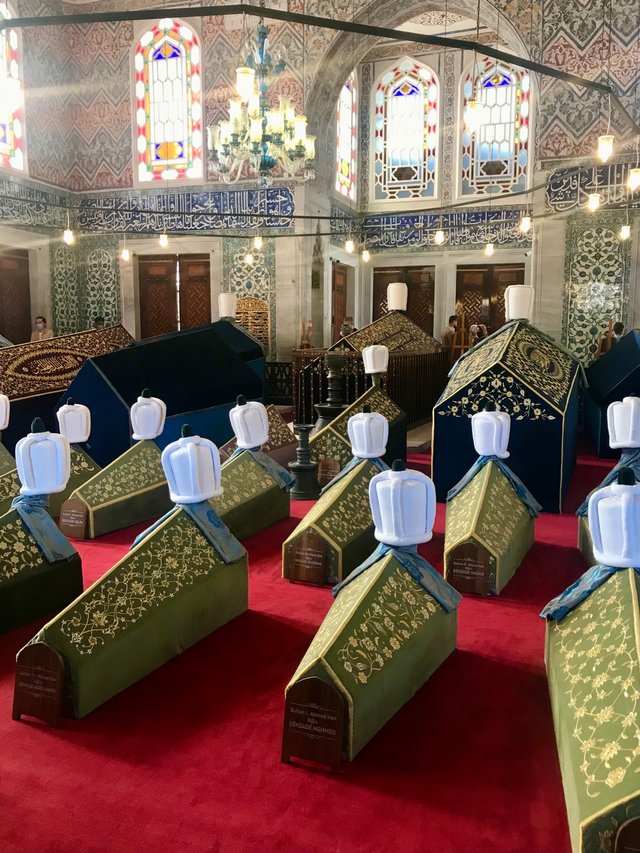
Being a living Sultan of the Ottoman Empire was a pretty good gig. For as long as you reigned, you enjoyed palaces, concubines, wealth, and ultimate power. But as a deceased Sultan? Well, in that case, you're entitled to eternal internment in one of the most ornate tombs on the planet. And the ornately tiled Tomb of Sultan Ahmed I - in Istanbul, Turkey - is just such a place.
Located on the edge of Sultanahmet Park, the Tomb of Sultan Ahmed I is a magnificent structure designed by Sedefkâr Mehmed Aga. Aga was a leading architect of his day and was also responsible for the building of the Sultan Ahmed Mosque, better known as The Blue Mosque.
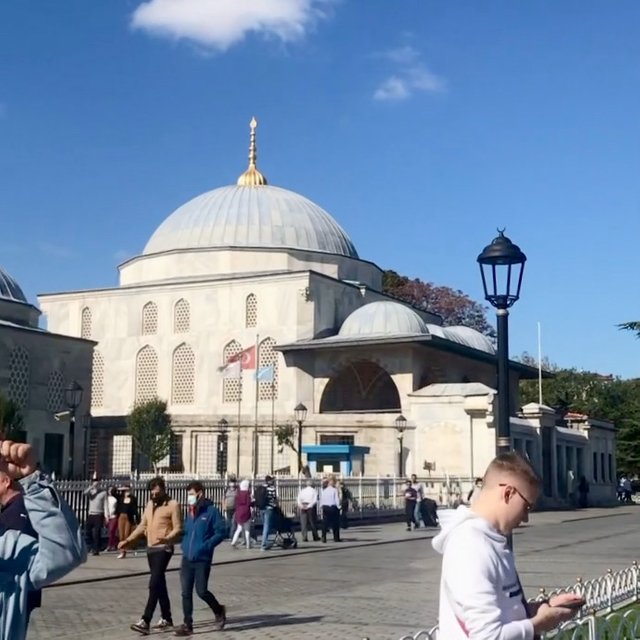
As I approached the squarish stone building, a set of simple steps led up to a small landing area. There, people were removing their footwear and placing them on a plain wooden shelf. Women donned hajibs as is Islamic custom. And for westerners unaccustomed to wearing such a headdress, temporary coverings were available for use.
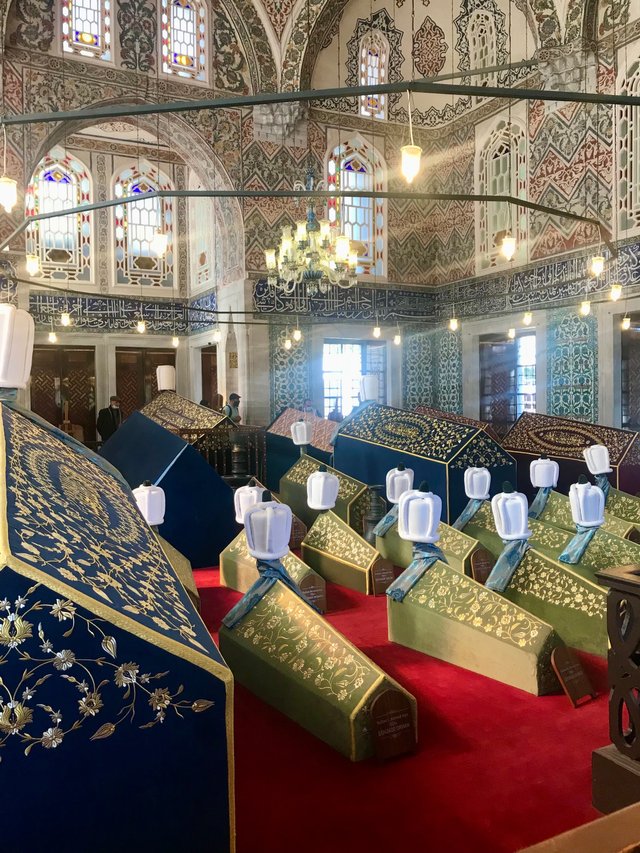
As I passed through the wide wooden doors into the mausoleum, I was immediately overwhelmed. There, crowded together, dominating the floorplan, were thirty-six velvet-covered sarcophagi. They ranged in size, with the biggest in the rear. While the largest were clearly the Sultans, the smaller enclosures were likely wives and children of the Ottoman Emperors.
And the tile! Iznik tiling from the 7th century dominates every inch of the walls and domed ceiling. Starting at ground level, botanical shapes in an elaborate dark leaf and vine swirl in a pattern. Above that, large blue tiles with Arabic script in bright white are bordered by smaller green-leaf design tiles.
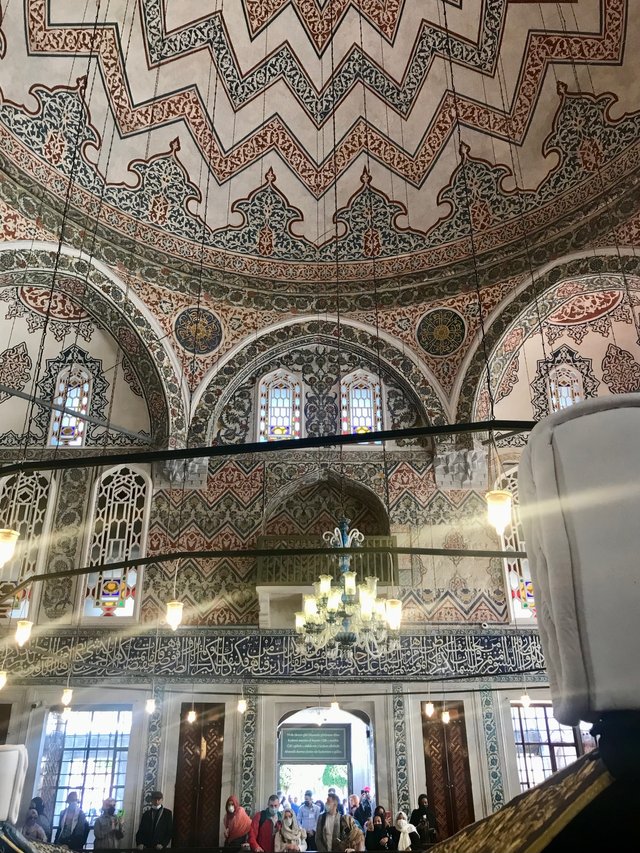
The second story is adorned with alternating red and green awning striped tile that circles the entire room. Although initially, it created a clashing sensation, I believe that this is intentional. Perhaps it was the artist's way of evoking the senses of any visitor not already impressed with the ground-level view.
But when you look up? The domed ceiling is truly a masterstroke.
Elegant arches are seated with understated stained glass windows formed in a soft Arabic Arch. Although relatively small, these windows appear to be placed at an angle to invite the maximum amount of sunlight into the chamber.
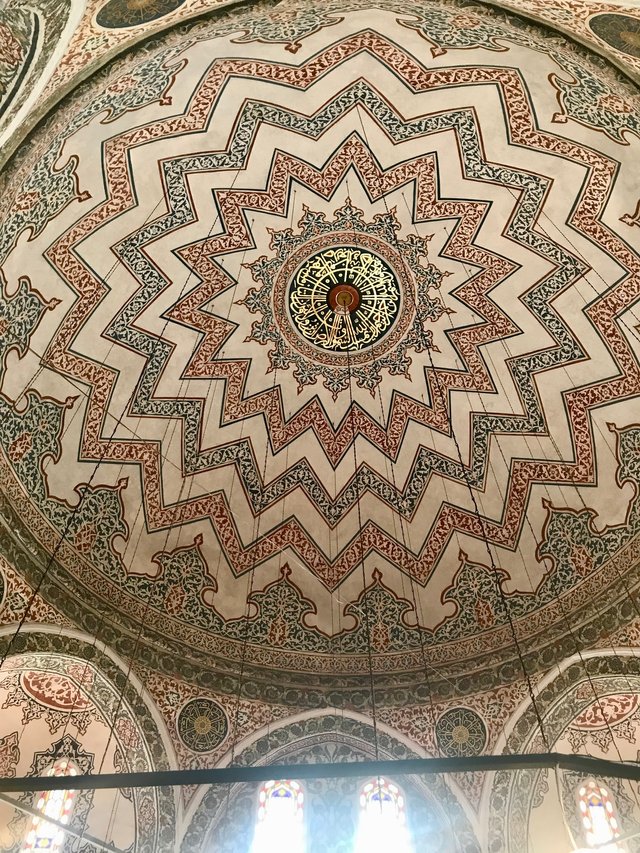
And the dome itself returns to the awning-striped tile pattern set above Arabic Arch insets. At the center of all this is a ring of gold Arabic inscription.
Hanging from the domed ceiling are many unassuming yellow lanterns. In the center of the room, a much larger cluster illuminates the room. However, the glow from these fixtures was no competition for the noon daylight passing in from overhead.
Overall, the swirl of patterns, colors, and the sunlight is mesmerizing! But the caskets of the Sultans still command your attention. Silent but summoning.

A narrow walkway, enclosed by a modest wooden balustrade, proceeded around the exterior walls of the building. I was grateful that this path allowed visitors to circle the entire room and not be limited to just the view from the front.
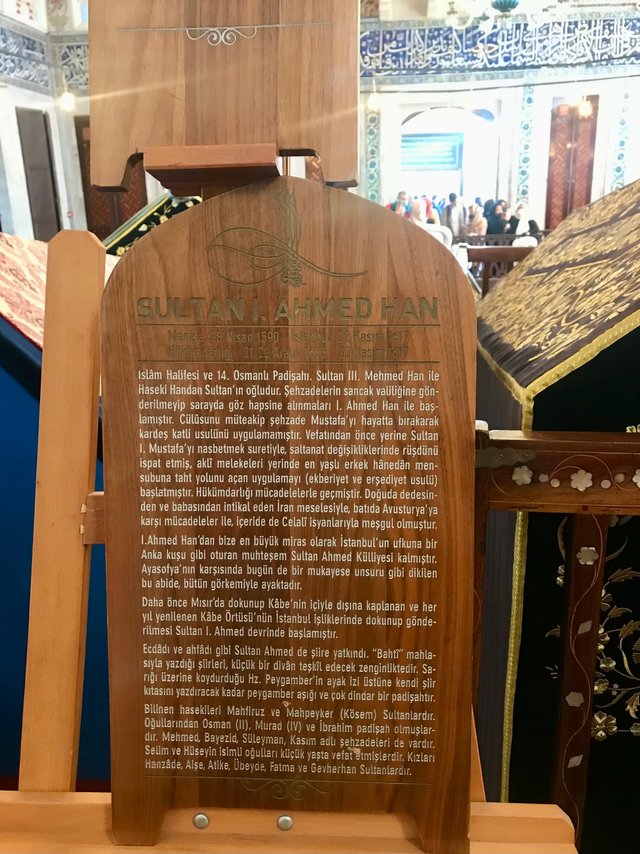
Making my way to the back of the room, I found myself in the presence of the Sultan himself. Sultan Ahmed I, born in 1590, took the throne at thirteen years of age and reigned for 14 years until his death in 1617 of typhus.
Ahmed displayed various skills and talents, such as fencing and writing poetry. These skills certainly attest to his patrician raising. He was, however, primarily responsible for losing a war against his neighbors, the Safavids. This defeat cost the Ottomans much of their territories to the east and signaled the start of their decline.
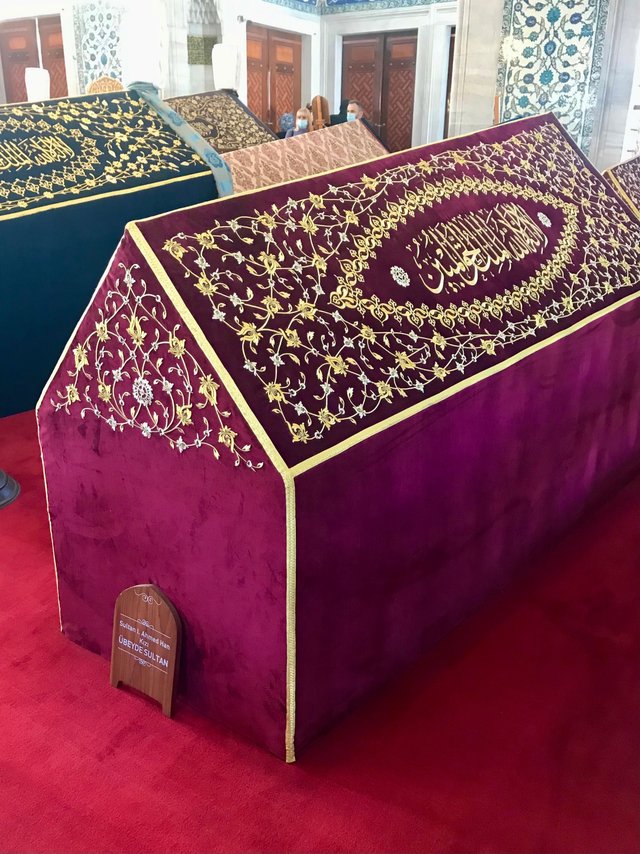
The tombs are screened by intricately decorated velvety tents. Various hues and patterns embellish the covers, casting the entire room in a wash of rich appearance. Despite the colorful array, the space retains a deep spirit of dignity and solemnity.
The chambers are part of and attached to the sprawling Blue Mosque complex. Tombs housing other Sultans and their families are nearby and worth a look. All of these areas are open daily and free to the public.
The ornately tiled tomb of Sultan Ahmed I in Istanbul, Turkey, is a Must-See for any traveler. Rich history, architecture, religious significance, and historic design make this spot appealing to almost anyone.
My excursions to Topkapi Palace and the Royal Harem show that to be Sultan was to rule what was then much of the known world. But for the chance to rest in such majestic opulence for eternity? Well, it almost makes dying worth the cost, doesn't it?
Cheers!
Background sources include:
turkisharchaeonews.net
wikipedia.org
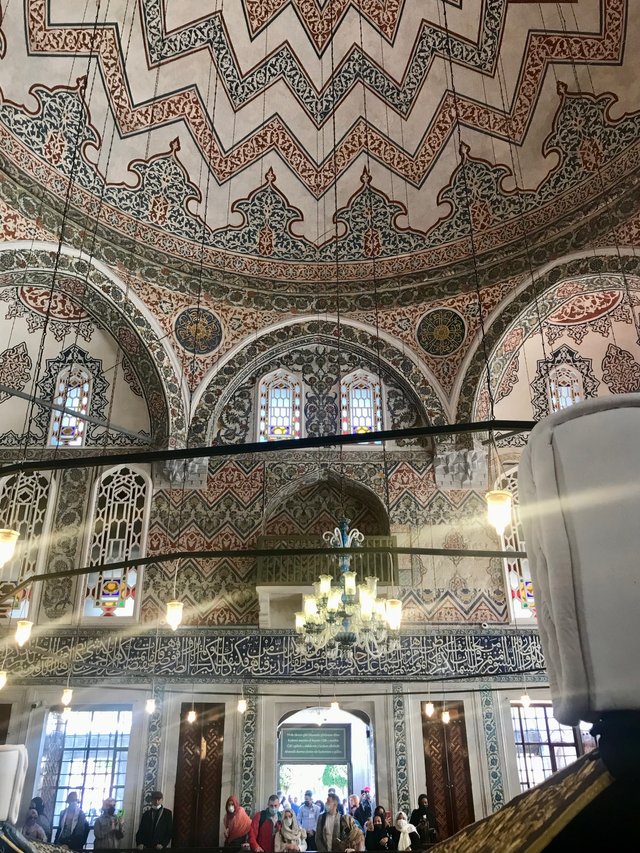
Congratulations @braveboat! You received the biggest smile and some love from TravelFeed! Keep up the amazing blog. 😍 Your post was also chosen as top pick of the day and is now featured on the TravelFeed.io front page.
Thanks for using TravelFeed!
@for91days (TravelFeed team)
PS: Have you joined our Discord yet? This is where over 1000 members of the TravelFeed come together to chat. Join us!